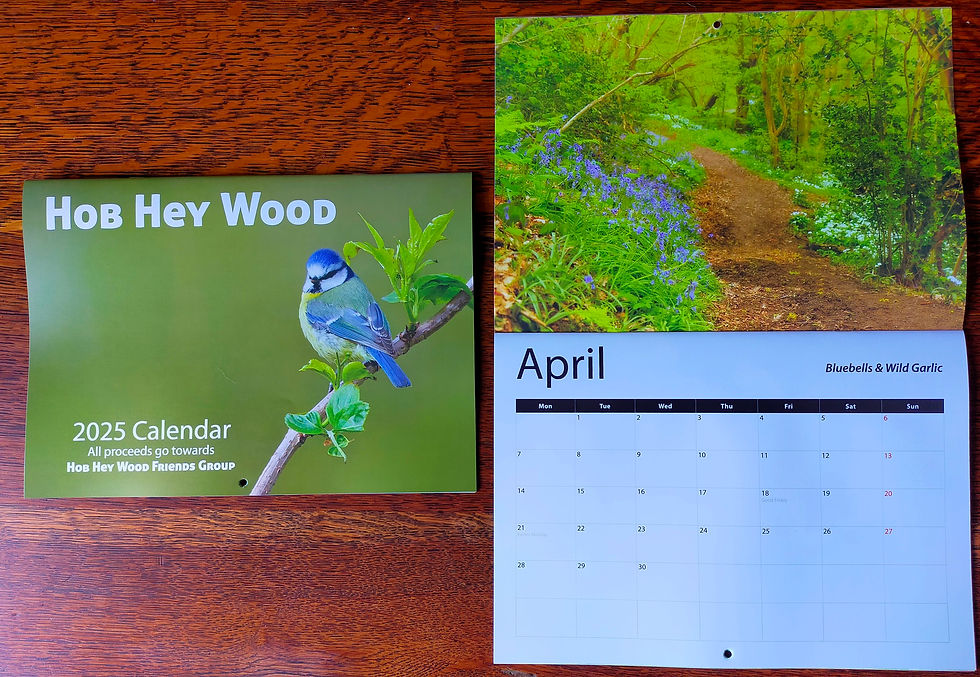What's it like being a volunteer?
- Mark O'Sullivan

- Aug 15, 2019
- 3 min read
What is it like being a volunteer looking after Hob Hey Wood and what can you get out of it?
Hob Hey is ancient semi-natural woodland, an extremely biodiverse yet increasing rare environment. It is also a wild space enjoyed by many of the people of Frodsham. Our group aims to protect the environment as well as improving it for the benefit of visitors. These two goals give volunteers plenty of scope for getting involved.
One of the most rewarding activities is tree planting. We have planted over 1,000 trees in the last year; to define boundaries, to fill gaps and to extend the community orchard with more fruit trees that will bear delicious fruit for us to enjoy in the coming years. Tree planting is extremely satisfying. Looking at a small ‘whip’, thinking how it might grow into a mighty ash tree in 50 years time is actually quite humbling.

Over the last year, the group has built several ‘dead hedges’ to guide access and prevent falls. I had no idea what ‘dead hedging’ was until joining the group. This involves planting poles and weaving smaller branches between them to create a hedge made of dead wood. These temporary structures are then planted with trees which will eventually replace the dead wood. It’s interesting seeing, say, a gap which people could fall down be replaced with a natural wooden fence.

All visitors to Hob Hey will have noticed that whilst some of the paths are superbly surfaced, the south-west path is not and can be challenging in wet conditions. The group has taken on the task of improving this. Widening, levelling and edging the path is hard work, but instantly rewarding. We recently put in a set of steps (only took an hour!); walking down those steps instead of navigating the narrow, angled drop that was there previously was extremely satisfying and will be every time we walk that way. Learning new skills like this is enjoyable, too.

One of our next tasks will be to clear some of the bracken-covered areas. In the spring we had a superb display of wild garlic, bluebells and other wildflowers. However, it was noticeable that there are some areas, usually covered in bracken, that have no wildflowers at all. Our aim is to convert these bracken-covered slopes (which aren’t too good for wildlife) into wildflower havens. Imagine being involved in this then seeing a bank of new bluebells appear over the next few years!

Our volunteers have learned an enormous amount over the past year. Our group’s experts have imparted their knowledge on the wood’s flora and fauna, as well as environmental and conservation issues. We’ve learned how to identify the many wildflowers, how to recognise badger setts, just how many different types of trees live there (and which are non-native), and how to find nesting woodpeckers and nuthatches. This increased knowledge really enhances the enjoyment of the wood.
We’ve been doing this now for over a year and have achieved so much. I am sure the other volunteers would agree that the work has been very satisfying and rewarding and achieving so much, in the company of others, has made it even more worthwhile.
On a personal level, one of the most rewarding activities has been letting others know about the wood and its inhabitants. Doing this during the volunteer days, chatting to visitors in the wood, or sharing photographs and articles on the Facebook page and the website has given me much enjoyment. Seeing other people also share their experiences of the wood has also been really interesting, too.
So, is becoming a volunteer something you might be interested in? You don’t need any skills or tools, just an interest in the wood and a desire to improve it. All tools and training are provided (and if I can do it, with my lack of practical skills, you probably can, too!). The dates of the volunteer mornings are posted on the website and Facebook, so come down and see what it is all about. It may give you as much satisfaction as it has me.




Comments